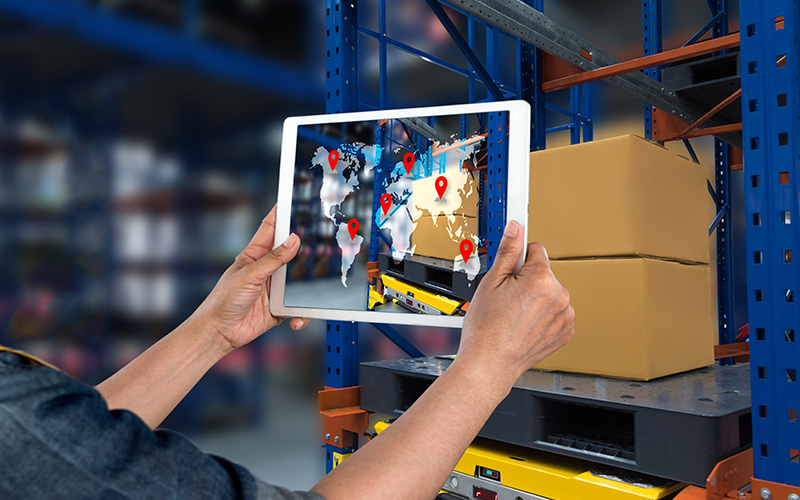Supply Chain
Critical supply chain challenges
While the past few years have seen leading businesses across sectors modernise their processes with cutting-edge technologies such as automation and cloud computing, most logistics providers are yet to upgrade their legacy systems and take advantage of contemporary digital tools. The hesitation in adopting the latest methods and processes, and embrace the resilience, agility, and flexibility provided by these processes, has led to a growing number of supply chain challenges and limitations.
The shipping and logistics sector’s reliance on outdated tech to evaluate inventory, manage orders, and ship materials has resulted in global supply chains that are extremely rigid and vulnerable. Under these circumstances, market fluctuations, material shortages, changes in demand, and other unforeseen situations can cause massive disruptions that negatively affect businesses and customers. We experienced such circumstances on a large scale in 2020, when the COVID-19 pandemic and subsequent shutdowns crippled businesses and supply chains across the globe. This resulted in the prices of essential commodities shoot up as stocks dwindled and store shelves left bare, with a shortage of dockworkers and truck drivers.
Today, over two years on, goods and materials are once again flowing freely as businesses are rushing towards clearing their massive backlogs. While most have caught up, there are still various supply chain challenges that business owners and logistics companies need to be prepared for. Let’s take a closer look at five common problems in supply chain management today and the remedial measures businesses can take to insulate themselves from future supply chain disruptions.
-
E-commerce growth
The pandemic hastened an online shopping boom across the world, and online shopping is expected to keep growing due to the convenience it offers. Consumers have access to a wide variety of products online, at competitive prices, and from the comfort of their homes, which is why they are less likely to revert to their old ways. This e-commerce boom places an additional load on the logistics sector, and the only way that businesses can meet this growing demand and reduce the risk of disruptions and delays is to modernise their supply chains with contemporary technology to enable the on-demand scalability that modern cloud-based solutions can offer.
- Lack of people and space
The logistics sector relies heavily on warehouse staff, truck drivers, and dockworkers to keep things running smoothly, and a shortage of transport workers is a growing global supply chain challenge. Increasing demand is also leading to a shortage of warehouse space, with some organisations going as far as hoarding warehouse space in preparation for future demands. Adopting modern supply chain management strategies can help businesses and logistics providers better utilise their resources.
- Centralised inventories
Most businesses today have moved from centralised in-house servers to decentralised cloud servers to store data and run applications for the agility, security, and flexibility that modern digital solutions offer. Similarly, a decentralised inventory offers a great deal of agility and flexibility in shipping and fulfilment processes. Imagine a scenario where all your inventory is stored in a single location and that location experiences a natural disaster or inclement weather that results in a citywide shutdown, crippling your supply chain. Modern cloud-based supply chain solutions can manage inventory across multiple warehouse locations and help businesses scale up or down as needed based on changes in supply and demand.
- Limited data visibility
Most modern businesses generate large amounts of data from multiple sources. These may include transactions with different manufacturers, traders, retailers, distributors, various sales channels, and logistics partners. Outdated supply chain practices lack the data management capabilities to properly leverage all this information to make smart decisions anticipating future outcomes. Without visibility into all the data generated across the many elements of the supply chain, businesses cannot gain actionable insights from this data. Aggregating all this data into a single platform with modern cloud supply chain technology gives organisations access to all their order, inventory, and delivery data, enabling them to make better supply chain decisions and monitor customer demand and inventory levels.
- Patchwork logistics
Using several third-party logistics providers for shipping and fulfilment can lead to a fragmented supply chain that doesn’t meet your specific requirements. Third-party logistics providers often tie organisations to long-term contracts and offer fixed services that can’t be customised. This rigidity can keep you from reacting swiftly to supply and demand variations, resulting in supply chain disruptions. Modern cloud-based supply chain solutions offer the flexibility and scalability needed to stay competitive in today’s market environment and satisfy customer expectations.
For organisations on the digital transformation journey, agility is key in responding to a rapidly changing technology and business landscape. Now more than ever, it is crucial to deliver and exceed organisational expectations with a robust digital mindset backed by innovation. Enabling businesses to sense, learn, respond, and evolve like living organisms will be imperative for business excellence. A comprehensive yet modular suite of services is doing precisely that. Equipping organisations with intuitive decision-making automatically at scale, actionable insights based on real-time solutions, anytime/anywhere experience, and in-depth data visibility across functions leading to hyper-productivity, Live Enterprise is building connected organisations that are innovating collaboratively for the future.
How can Infosys BPM help?
Infosys BPM offers a comprehensive suite of supply chain optimization services to help your business overcome the modern challenges of supply chain management. Reach out to learn more about building a resilient and cost-effective supply chain.






